See also: Index of Best Braves by Uniform Number
The best Brave to wear #4 had some of his best seasons wearing #3, but had a really good reason to switch. Also arguably the greatest Boston Brave to put on the uniform in the live-ball era, it’s centerfielder Wally Berger.
Berger grew up in 1920’s San Francisco, at the time a hotbed of baseball talent. He went to high school and played third base next to future Hall of Famer Joe Cronin at shortstop. At the age of 19 he signed his first pro contract with the San Francisco Seals of the Pacific Coast League, though an injured back caused the team to cut him in spring training. Berger bounced around semi-pro teams until he he finally got another chance at the pros, signing with the class-C Pocatello Bannocks of the Utah-Idaho League. Hitting .385 with 24 home runs got him another shot with the PCL, this time with the Los Angeles Angels, the AA team for the Chicago Cubs. In 1929, Berger hit .335 with 41 doubles and 40 home runs with Los Angeles, and a call-up to Chicago for 1930 seemed assured. Instead, Berger was traded to the Boston Braves for two veteran players and cash.
The Braves finished 1929 last in the National League and owner Judge Emil Fuchs was looking for a fresh face to ignite the team on the field and help flagging attendance. He ended up getting even more than he bargained for, as Berger hit .310/.375/.614 with a rookie record 38 home runs in 1930, a mark that would stand until finally broken by the Dodgers’ Cody Bellinger in 2017. The Braves improved their record by 26 games, and their attendance climbed by over 92,000.
In 1932, the Braves wore uniform numbers for the first time, and as was the custom the batters took the number of their batting order slot, so Berger wore #3. In 1933, Berger was named the starting centerfielder for the National League of the very first All-Star Game. From 1932 through 1936, Berger would garner MVP votes, finishing as high as 3rd in 1933 when he hit .313/.365/.566 with 27 home runs. That year the Braves finished this season with a 83-71 record, their first over .500 in 13 years, and good enough to have the team finish 4th in the NL. Berger put up consistently strong seasons throughout the the mid-1930s period, but after 1933 the team started to collapse around him. The Braves would finish 4th again in 1934, but under .500. With attendance dropping sharply as the Great Depression continued to sap disposable income, Judge Fuchs brought in a Boston legend and the most famous baseball player of all time, Babe Ruth.
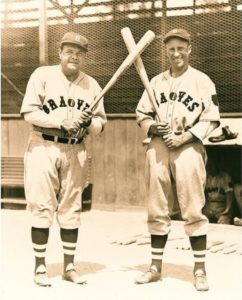
Berger of course graciously ceded #3 to the Bambino and took #4.
Berger was brilliant in 1935, leading the National League in home runs (35) and RBI (130) while hitting .295/.355/.548. Unfortunately the rest of the team was awful, including Ruth who retired by June. The Braves once again sank back to 8th place with a franchise-worst 38-115 record. Attendance dropped again and Judge Fuchs was forced to sell the team to a group headed by Boston-area businessman Bob Quinn, who renamed the team the Bees in order to try to change the team’s fortunes.
Berger would only have one more full season in Boston. In 1936, Berger got off to his usual strong start, but in May suffered first a wrist, then a shoulder injury. After showing to be one of the most durable players the prior six seasons, Berger was forced at age 30 to have to take time off. With the team out of the running, the Bees finally pulled the plug on Berger’s season in September. Berger’s shoulder injury proved to be chronic and he was never the same player again. After only 30 games in 1937 and hitting a disappointing (for him) .274/.344/.504 and 5 home runs, Quinn unceremoniously sold his contract to the New York Giants.
Berger would essentially be a part-time player for the rest of his career. He had a slight resurgence with the Cincinnati Reds in 1938 playing under his old Boston manager Bill McKechnie. The Reds would win the NL pennant in 1939, but in 1940 the Reds released Berger, who ended up the season and his major league career with the 8th-place Phillies at the age of 34. Berger briefly tried to resurrect his career back with the Los Angeles Angels, but his heart and his shoulder weren’t up for it, and he hung up the spikes for good when he enlisted in the Navy in 1942 at the age of 36.
In his 8 seasons with the Braves/Bees, Wally Berger hit .304/.362/.533 with 199 home runs, 248 doubles, and 746 RBI and has the 10th-highest fWAR in franchise history among position players.
Berger was modest, quiet, hard-working, conscientious, and disciplined. He didn’t kick dirt on umpires, become engaged in scandal, or engage in wacky behavior. He didn’t make good copy for the boys in the press box. In his prime he played in a ‘pitchers park’ with a team that never came close to winning all the marbles. It was a club out of the mainstream. It was inadequately financed, poorly administered, and usually overmatched on the field. Despite all this, the Braves were always an interesting team, a team that had its great moments. They were led by the best manager of the times and supported by devoted and hopeful fans. And for seven seasons their most brilliant, courageous, and persevering player was Walter Anton Berger.– Author George Snyder
Honorable Mention
- Hall of Famer Red Schoendienst wore #4 for the 1957-60 Milwaukee Braves. Though mostly known for his 15 seasons with the Cardinals, Schoendienst hit .310/.348/.434 in 1957 for the Braves after a June trade and he was a key contributor to the back-to-back NL pennant 1957/58 teams, winning the World Series in ’57.
- Outfielder Sid Gordon was a slugger for the 1950-1953 Braves and one of the inaugural Milwaukee Braves in 1953. Gordon hit .289/.385/.500 with 100 home runs in his four years with the club before being salary-dumped to Pittsburgh.
- Jeff Blauser was the offensive side of a productive platoon with Rafael Belliard during the Atlanta Braves 1990s heyday. In 11 seasons with the Braves, Blauser would hit .268/.355/.415 with 122 home runs, going to two All-Star Games and winning the Silver Slugger in his final season with the club in 1997.

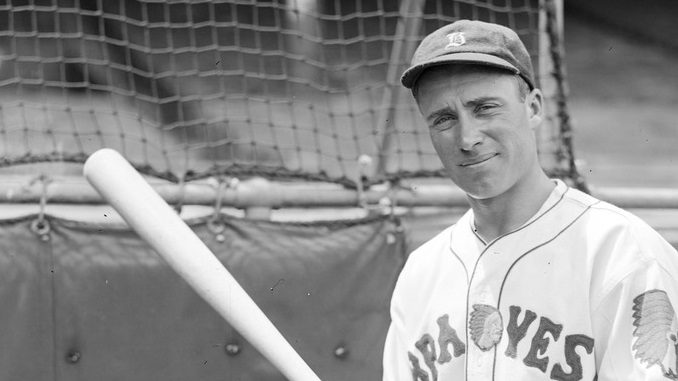
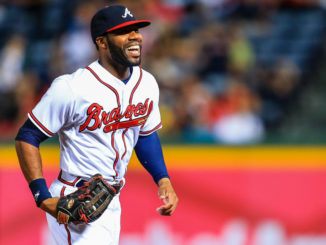
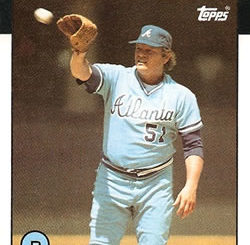
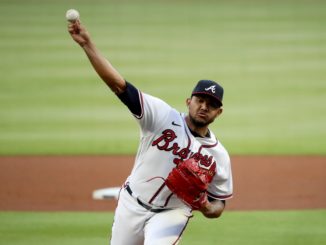
Leave a Reply